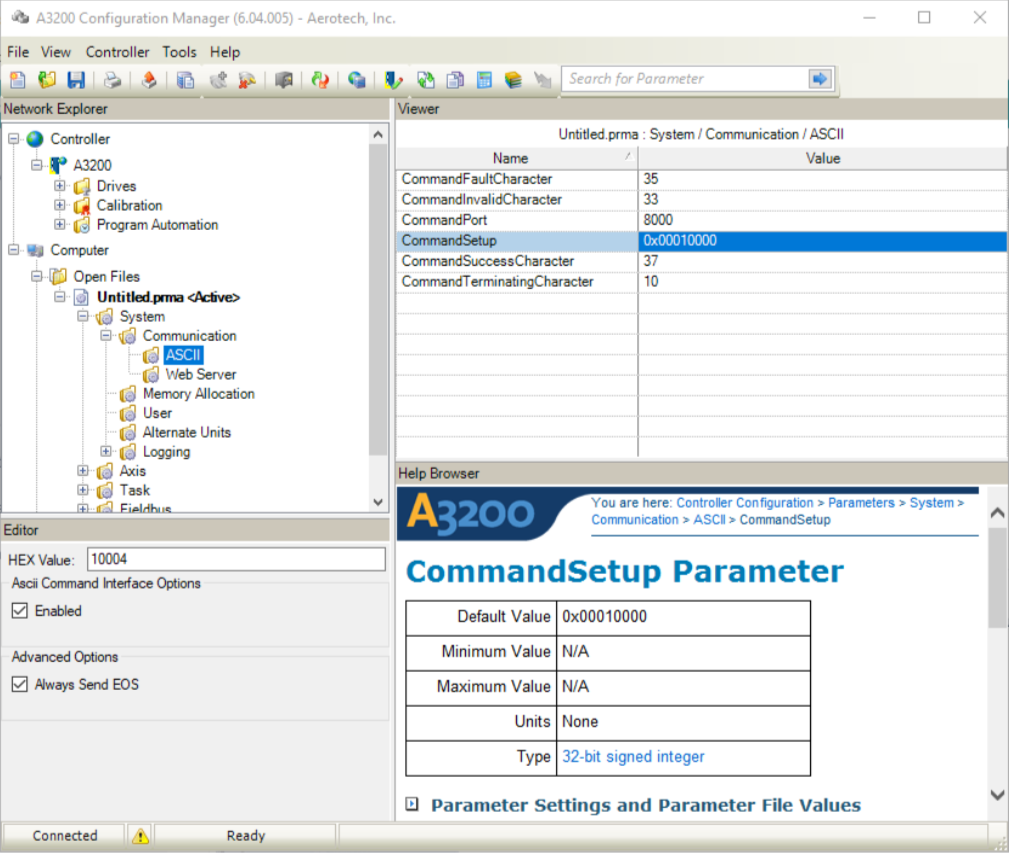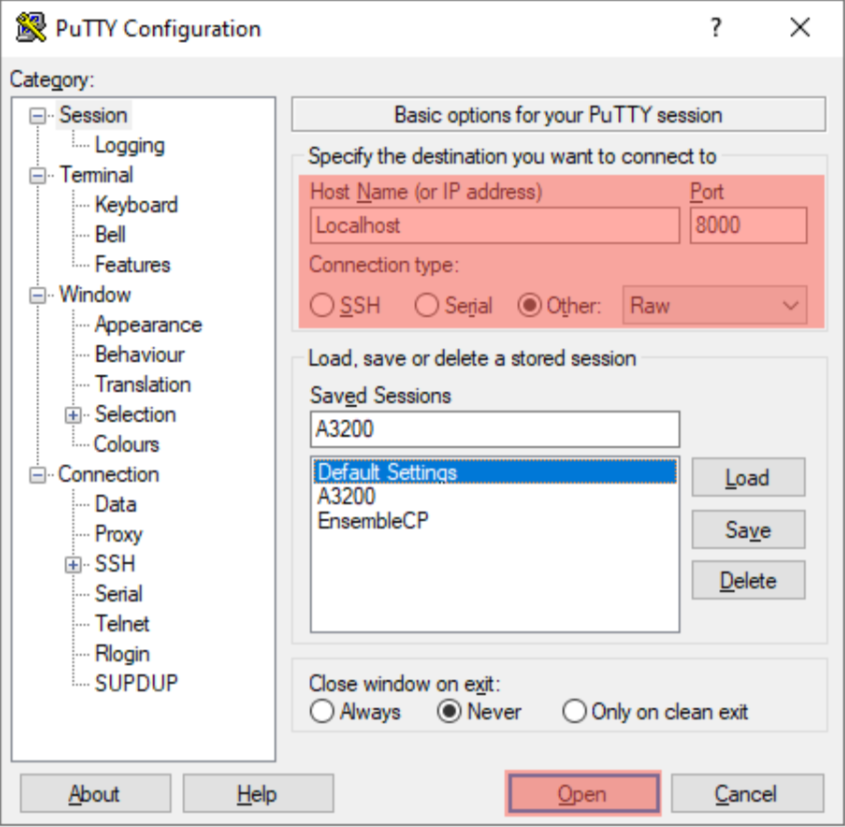Requirements:
- PC
- Aerotech Software (A3200, Ensemble, Soloist)
- “External” third-party client program (ex. PuTTY)
Refer to the ASCII Command Interface page in the Help File for more information on the ASCII Command Interface options and setup. |
A3200 Example
The ASCII command interface is not enabled by default. To enable the interface:
- Open A3200 Configuration Manager
- Under System > Communication > ASCII in the parameter file, find the CommandSetup and CommandPort parameters.
- Check the Enabled box in the Editor for the CommandSetup parameter.
- Use the CommandPort parameter to set the TCP/IP port that A3200 will use to listen for incoming client connections. The default is 8000.
NOTE: You must reset the controller for these changes to have an effect. |

From PuTTY (as an example client):
- Enter Host Name (ex. “Localhost”)
- Set Connection Type = Raw
- Enter Port. Port value must match the CommandPort parameter
- Click Open to open the port connection

Ensemble/Soloist Example
The ASCII command interface is not enabled by default. To enable the interface, use the following procedure.
- In Configuration Manager, right-click on the connected controller and select Retrieve Parameters.
- Expand the controller tree to Parameters > System > Communication > ASCII and find the CommandSetup parameter.
- In the ASCII Command Active Port section of the Editor pane, select one or more of the communication interfaces that you want to use for the ASCII command interpreter.
- For example, RS232 or Ethernet Sockets
For each interface selected above, use the parameters that correspond to that interface under the Parameters > System > Communication tree to configure communication.
(ex. Use the parameters under Ethernet Sockets (Socket2Port, Socket3Setup, etc.) to configure communication if an Ethernet Socket was enabled in the CommandSetup parameter).
- It is recommended to configure them to be a server instead of a client on the Ensemble/Soloist (this applies to the Socket2Setup and Socket3Setup parameters)
It is recommended to use TCP/IP instead of UDP/IP. Data loss in UDP sockets can occur with UDP/IP. If you must use a UDP socket, decrease the risk of losing data by using a cross-over cable between the devices (recommended) or by using a closed network such as a hub or switch with only the client and server devices connected. - The IP address for the TCP/IP connection uses the IP address that is set under Controller > Connection Settings in Configuration Manager.
 |
NOTE: You must reset the controller for these changes to have an effect. |
From PuTTY (as an example client):
- Enter Host Name (ex. The IP address of the controller, located under Controller > Connection Settings in Configuration Manager)
- Set Connection Type = Raw
- Enter Port. Port value must match the corresponding parameter based on the interface chosen (ex. Socket2Port, Socket3Port)
- Click Open to open the port connection

Related articles
Related articles appear here based on the labels you select. Click to edit the macro and add or change labels.





